These are all the roads in Preston, Chorley and South Ribble to be resurfaced this year - and how much more cash Lancashire needs to really improve its highway network
and live on Freeview channel 276
Lancashire County Council has calculated that the annual “sustainable investment” needed to achieve such an ambition would range between £51.9m and £56.2m, after recently rocketing as a result of the soaring cost of the necessary materials.
However, County Hall is in line to receive a highways maintenance grant from the Department for Transport (DfT) for 2023/24 of just £28.1m - the same amount that it has been handed for the last two years.
Advertisement
Hide AdAdvertisement
Hide AdThat total largely excludes the budget for fixing potholes and other defects which appear unexpectedly during the course of the year - and into which the authority expects to sink a further £9m in the 12 months from April.
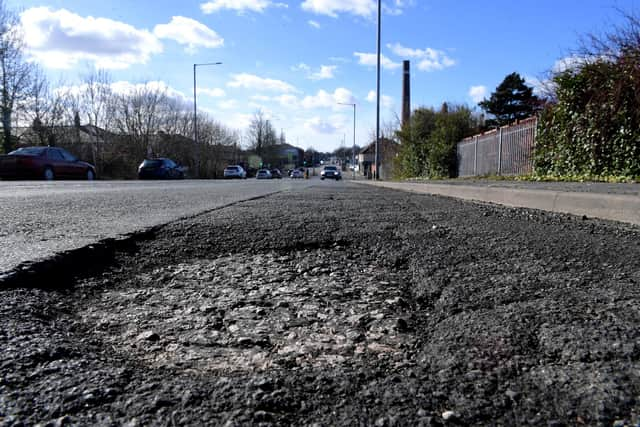

The potholes funding pot has this year been bolstered by an extra £1m agreed when the county council set its overall budget last month - continuing a trend in recent years for more money to be set aside for so-called “reactive” repairs.
However, a report presented to cabinet members laying out the scheduled works for the year ahead revealed a growing gap between the amount available to fund it and what would be required to “improve the asset condition”.
Prior to the spike in inflation over the last year, that figure had been estimated to stand at £43.3m - still over £15m short of the DfT grant given to the county council, notwithstanding the fact that the authority has long qualified for the maximum amount of government “incentive funding”, provided as part of the maintenance cash, in recognition that it makes the most effective use of the highways money that it does have at its disposal.
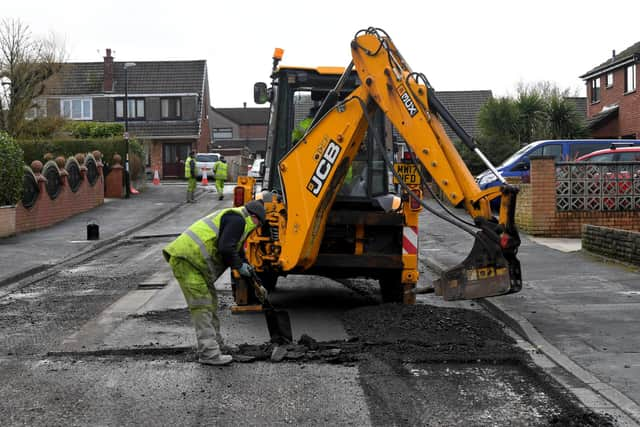

Advertisement
Hide AdAdvertisement
Hide AdThe cabinet report also noted that the county council would now need between £41.7m and £45.2m just to manage the highways “within a reasonable level of risk” - although it added that the £28.1m from the DfT, when funnelled through County Hall’s mechanism for prioritising roads requiring maintenance, would still help “overall risk” to be controlled.
The funding needed for reasonable risk management was previously estimated to be £34.8m - much closer to the amount that the authority actually receives.
The DfT grant also has to cover the cost of repairing footpaths, dealing with drainage problems, and maintaining bridges, street lamps and traffic lights. For 2023/24, approximately 55 percent of the cash is reserved specifically for road surface upgrades or repairs.
In spite of the inflationary pressure it faces in in looking after 4,600 miles of road, the county council - which is responsible for almost all non-motorway routes in Lancashire, except in the Blackpool and Blackburn with Darwen areas - plans to carry out just over 100 resurfacing and surface dressing schemes over the next year, many of which will encompass multiple individual roads. In Central Lancashire, 12 projects are planned in Chorley, five for Preston and four in South Ribble, the district which this time round gets the fewest.
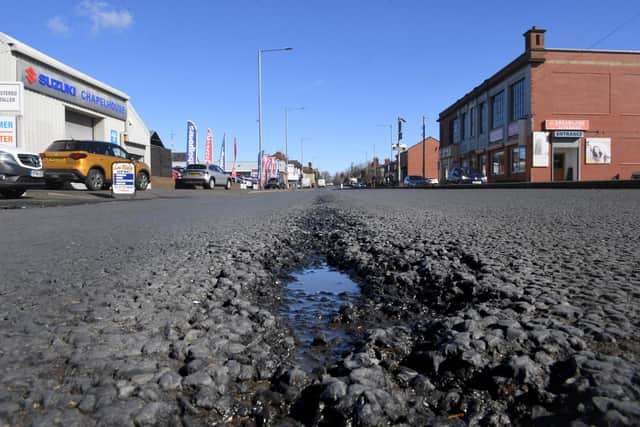

Advertisement
Hide AdAdvertisement
Hide AdThis year’s DfT grant will be boosted by almost £1.9m of improvements to be made as a result of a local project which recycles waste material from the under-construction Samlesbury Enterprise Zone and uses it in the repair of minor roads.
However, the recently-appointed cabinet member for transport and highways, Rupert Swarbrick, warned at the Conservative-run authority’s latest cabinet meeting that he was unable to visit every bit of “really rubbish road” in Lancashire at the growing request of his 83 fellow county councillors.
“I hold my hands up and say I don’t have enough time to go and do that. I will come and look at other stuff where it's appropriate and I’m not making myself inaccessible, [but] what I’m not setting myself [up to do] is to make promises in the field that I can't deliver,” County Cllr Swarbrick explained.
He was responding to concerns raised by Labour opposition group leader Azhar Ali, who claimed - as he has done previously - that there was “political fixing” afoot when it came to prioritising road repairs in Lancashire. County Cllr Ali said he suspected that County Hall’s transport asset management programme (TAMP) was being used as a “decoy” to justify the choices being made.
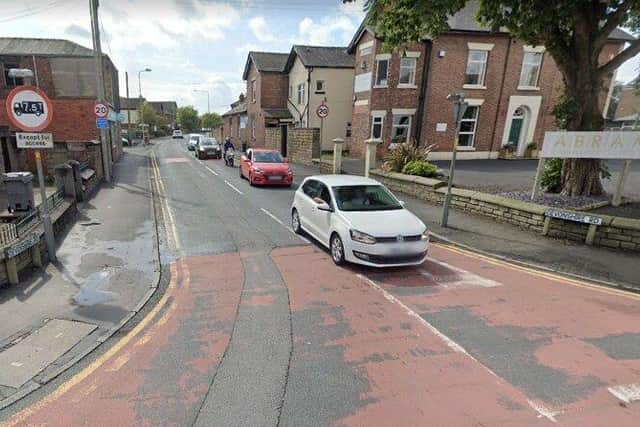

Advertisement
Hide AdAdvertisement
Hide AdCouncil leader Phillippa Williamson refuted the suggestion, noting that all of the authority's political groups had gripes over which roads were receiving attention.
County Cllr Swarbrick stressed that the TAMP - which was introduced in 2015, when Labour was in control at County Hall - existed precisely to ensure that the cabinet member of the day could not be accused of “political shenanigans” by favouring particular schemes.
However, he added that there were aspects of the “algorithmic” calculations that underpin the programme that he was yet to get to grips with within his new role - and pledged to “demystify” the policy for all members once he had done so for himself.
The TAMP is based on the principle of ensuring preventive maintenance is prioritised rather than taking a 'worst road first' approach.
Advertisement
Hide AdAdvertisement
Hide AdThe programme is being delivered in phases through until 2030. It initially focussed on the county’s A, B and C routes and has now, in its second phase, turned its attention to unclassified roads, like those in residential areas.
However, major routes do still feature in the annual pre-planned maintenance programme and the policy is designed to ensure that the progress made in its early years is sustained even as the focus shifts. A report to cabinet last September concluded that the authority was “on track” to achieve that aim, but noted that there was “a substantial backlog” of work to be carried out on unclassified highways, according to data from earlier in 2022.
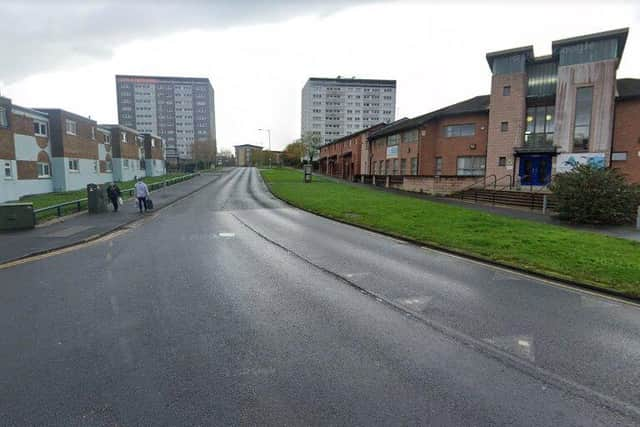

The document also revealed that there was not enough funding available to replace the county’s ageing stock of lampposts and traffic lights at “an appropriate pace” - and that the highest-risk issues among both sets of the vital infrastructure were being dealt with first.
In order to make the money go further, there was to be a focus on replacing the obsolete components of traffic lights, where possible, rather than renewing the lights in full across entire junctions. Investment in this area is, however, being increased this year.
Advertisement
Hide AdAdvertisement
Hide AdMeanwhile, the latest cabinet report highlights the challenges posed by the current rate of inflation, which has resulted in an effective reduction in the funding available for routine maintenance in the year ahead. These include a reduced ability to address the TAMP’s phase 2 repair priorities, particularly on the urban unclassified network, which is currently considered to be “poor” and will likely deteriorate further.
The increased chance of streetlight columns failing - and the resultant risk to the public - is also noted, requiring a move from scheduled streetlamp replacement to column testing in order to ensure safety.
Highways authorities like the county council have a duty to maintain the road network in such a way that it remains “reasonably passable for the ordinary traffic of the neighbourhood [in] all seasons of the year, without danger caused by its physical condition”.
In a statement after the meeting where the maintenance schemes for the next 12 months were agreed, County Cllr Swarbrick said that the cash poured into the county’s main roads in previous years meant that the county council was now able “to spend less to keep them in good condition - and invest more in the smaller urban roads”.
Advertisement
Hide AdAdvertisement
Hide AdHe added: "A recent review of our transport asset management plan (TAMP), which underpins our approach to maintenance, found that 'prevention is better than cure', rather than always focusing on replacing the worst first [and] is the right long-term strategy.
"The evidence for this is that fewer faults are now being found in the A, B and C roads which have been the focus of this strategy over recent years.
"It also means we receive more incentive funding from the Department for Transport, as we can show our approach provides the best value for money.
"However, we also face some really big challenges, as parts of our transport infrastructure are ageing and need to be carefully managed until we can secure the substantial funding needed to replace them.
Advertisement
Hide AdAdvertisement
Hide Ad"We are working hard to identify opportunities to fund this work and will use the robust survey data we have collected to help make Lancashire's case for our share of any extra funding which becomes available for infrastructure improvements."
According to analysis by the Local Government Association this month, the government spent 31 times more per mile on maintaining motorways and A-roads last year than they did on funding councils to repair what the organisation described as “crumbling local roads” and the potholes that plague them.
POTHOLE UNPREDICTABILITY
On top of the scheduled roads maintenance that it carries out every year, Lancashire County Council also has to respond to those potholes that peskily crop up all year round.
The authority generally fixes highway defects only once they are greater than 40mm in depth.
Advertisement
Hide AdAdvertisement
Hide AdAs there is no way of predicting how many potholes will emerge that meet the so-called “intervention criteria”, County Hall can only estimate how much money it will need to spend on unplanned repairs.
According to a report to cabinet members, this year it has set aside £11m for that purpose - £8m of which will come from its wider capital programme, funded by grants in the first instance and borrowing “as a last resort”, with £2m earmarked for structural defects within the £28m government-funded budget for pre-planned work.
At the authority’s general budget meeting last month, an additional £1m was injected into the highway coffers to fix multiple defects on roads which would otherwise have to wait longer for repair.
Separately, £2.2m is set aside in the scheduled repair budget for a “local deterioration fund” focusing on mini-resurfacing schemes which are prioritised according to the number of defects in an area in an attempt to reduce the number repeat visits required to repair individual potholes which could be more efficiently have been fixed in a single cluster. The number of complaints received and claims generated - along with the significance of the route in question - are also factored in to the decisions about which roads should be allocated a share of the fund.
Advertisement
Hide AdAdvertisement
Hide AdThe county council is encouraging residents to report road defects via the Love Clean Streets app and, as of November 2022, it was exceeding all of its targets for the length of time that it should take to repair problems, ranked according to their seriousness. Urgent issues should be attended to within two working days and the least urgent within 20.
However, at a this month's cabinet meeting, Labour opposition group leader Azhar Ali claimed that some members of his party had been told by highways officials at County Hall to “slow down” in their reporting of road faults and to stop sending emails because of the number of messages being received from county councillors raising issues.
“I think that’s unacceptable behaviour - it doesn't matter who runs the council, but officers shouldn't be telling members not to send emails in,” County Cllr Ali said.
The meeting heard that his allegation would be investigated.
ALL THE ROADS TO BE REPAIRED IN CENTRAL LANCASHIRE (2023/24)...
Chorley
Advertisement
Hide AdAdvertisement
Hide AdChancery Road, Astley - resurfacing between Euxton Lane and Mimosa Close
Chancery Road, Astley - surface dressing from Mimosa Close to Westway
Chapel Lane, Wheelton - resurfacing from house no.105 to the start of the bridge
Charter Lane, Charnock Richard - surface dressing from Church Lane to Chorley Lane
Advertisement
Hide AdAdvertisement
Hide AdCoppice Lane, White Coppice - surface dressing from Tithe Barn Lane to Hollin Lane
Devonshire Road and surrounding roads - surface dressing of Devonshire Road from St Thomas's Road to Gillibrand Walks; Bank Street from St Thomas's Road to Collison Avenue; Carrington Road from Ashfield Road to Gillibrand Walks; Hamilton Road from Ashfield Road to Devonshire Road; Regent Road from Ashfield Road to Devonshire Road; and the full lengths of Collison Avenue, Rylands Road and Trinity Road
Netherley Road and surrounding roads - surface dressing of Dickens Road from Netherley Road to Byron Crescent; Byron Crescent from Dickens Road to Milton Road; Milton Road from Dickens Road to Byron Crescent; and the full lengths of Netherley Road and Shelley Close
Old Worden Avenue, Buckshaw Village (straddles the border with South Ribble) surface dressing of the full loop from Central Avenue to Village Way
Advertisement
Hide AdAdvertisement
Hide AdTootell Street - resurfacing between house no.30 and Pall Mall
Village Way, Buckshaw Village - surface dressing between Buckshaw Avenue and Old Worden Avenue
Yarrow Valley Way (B5252) - resurfacing between Burghwood Way and Nightingale Way roundabouts
Yarrow Valley Way (B5252) and Hall Road - surface dressing from Ackhurst Road onto Moor Road and through to Tootell Street
Preston
Advertisement
Hide AdAdvertisement
Hide AdAvenham Lane - resurfacing from the Manchester Road roundabout to Syke Hill
Avenham Lane, Glover Street and Syke Street - surfacing dressing of Avenham Lane between Ribblesdale Place and Shepherd Street; and the full lengths of Glover Street and Syke Street
Blackpool Road (A5085) - surface dressing between Garstang Road and Woodplumpton Road
Broadwood Drive and surrounding roads - surfacing dressing of the full lengths of Broadwood Drive, Brooklands Avenue, South Drive, Polefield, Heversham Avenue, Aysgarth Avenue, Goodwood Avenue, Hellifield Drive, Parklands Drive, Moorfield Avenue, South Grove, Brookfield Drive, Woodlands Drive, Parklands Grove and Tinkersland
Advertisement
Hide AdAdvertisement
Hide AdMiller Lane and Bay Horse Lane, Catforth - surface dressing of full loop off Catforth Road
South Ribble
Birch Avenue and surrounding roads, Penwortham - surface dressing of Birch Avenue from house no.110 to lighting column no.9; of Cherrywood from house no.72 to Birch Avenue and the full length of Central Drive
Hollins Lane, Leyland - resurfacing from Leyland Lane to the end of the adopted stretch at Oakland Farm
Langholme Road South, Penwortham - resurfacing from Highland Avenue to the end
Advertisement
Hide AdAdvertisement
Hide AdMoss Lane and Hugh Barn Lane, New Longton - surface dressing from Chapel Lane to Sheephill Lane
...AND THE REST OF LANCASHIRE
Burnley
Brownside Road - surface dressing from Ormerod Street, Worsthorne, to outside house no.47
Hargher Street - resurfacing from Accrington Road to Harold Street
Ightenhill Park Lane and Lakeland Way - surface dressing of Ightenhill Park Lane from Lakeland Way to house no.176; and the full length of Lakeland Way
Fylde
Advertisement
Hide AdAdvertisement
Hide AdCartmell Lane, Lytham - reconstruction of a 210m stretch at the bend near Primrose Hill Farm
Clifton Gardens, Lytham - resurfacing full length
East Cliffe and Victoria Street, Lytham - resurfacing full lengths of both
Grange Road, St. Annes - surface dressing from Oxford Road to St. David's Road North
Grasmere Road and surrounding roads, St. Annes - surface dressing of Highbury Road East from Leech Lane to Grasmere Road; and the full lengths of Grasmere Road, Marlborough Road and Chatham Avenue
Advertisement
Hide AdAdvertisement
Hide AdKirkham/Wesham bypass (A585) - surface dressing between Blackpool Road and Fleetwood Road (B5192)
Moss Side Lane, Stalmine - reconstruction between pumphouse and Union Lane
Salwick Place and Weeton Avenue, St. Annes North resurfacing full lengths of both
Westby Street, Lytham - surface dressing from Ballam Road to Park View Road
Hyndburn
Advertisement
Hide AdAdvertisement
Hide AdAlice Street, Accrington - resurfacing from Burnley Road to Avenue Parade
Burnley Road (A678 - also straddles Burnley and Ribble Valley districts) - resurfacing between Bold Venture Way roundabout amd Higher Firs Drive
Burnley Road (A678) - surface dressing between Whalley Road and the Bold Venture Way Roundabout and from Higher Firs Drive to lighting column no.42
Elizabeth Street, Accrington - resurfacing from Stevenson Street West to Pickup Street
Advertisement
Hide AdAdvertisement
Hide AdHaslingden Old Road (B6236), Oswaldtwistle - surface dressing from Lottice Lane to outside Mount Pleasant Farm
Highfield Road, Great Harwood - resurfacing full length from Blackburn Road to Station Road
Hollins Lane, Accrington - surface dressing from the roundabout at Royds Street to Newton Drive
Lynwood Avenue, Clayton-le-Moors - resurfacing from house no. 41 to house no. 20 and from house no.10 to the junction with Whalley Road
Advertisement
Hide AdAdvertisement
Hide AdLynwood Avenue and surrounding roads, Clayton-le-Moors - surface dressing of Lynwood Avenue from Sparth Road to house no.41 and from house no.20 to house no.10; and the full lengths of Woodside Way, The Coppice, Lynwood Close, Lodgeside, Fordside Avenue, Fernlea Drive and Brookland Close
Ormerod Street, Accrington - resurfacing from Eagle Street to Willows Lane
Stevenson Street West and surrounding roads - surface dressing of Stevenson Street West from Spring Hill Road to Spring Street, from Spring Street to Edleston Street and from Edleston Street to Exchange Street; of George Street from Spring Hill Road to Spring Street and from Spring Street to Edleston Street; and the full lengths of Spring Street, Edleston Street and Sharples Street
York Street, Accrington - resurfacing from North York Street to York Place
Lancaster
Advertisement
Hide AdAdvertisement
Hide AdBailrigg Lane – surface dressing from the A6, Scotforth Road to property “Lane Ends”
Barley Cop Lane, Skerton – resurfacing from the junction with Slyne Road to house no.94 and from house no.165 to adjacent to the junction with Folly Lane
Barley Cop Lane and Noel Road, Skerton – surface dressing of Barley Cop Lane from house. no.94 to 165 and of Noel Road from Barley Cop Lane to Torrisholme Road
Birkland Barrow Road and Timpenny Road – surface dressing of Birkland Barrow Road from Kirby Lonsdale Road to Timpenny Road; from Timpenny Road to the campsite farm track entrance; and of Timpenny Road from Birkland Barrow Road to the junction with the main road
Borwick Court – resurfacing full length
Advertisement
Hide AdAdvertisement
Hide AdBotton Road – resurfacing from Botton Mill Bridge to Hollinghurst Brow
Burnsall Avenue and Norland Drive, Heysham – resurfacing full lengths of both
Cambridge Road, Morecambe – resurfacing between Alexandra Road and Gardner Road
Grosvenor Road, Heysham – resurfacing full length
Keswick Grove and surrounding roads, Heysham – resurfacing the full lengths of Keswick Grove, Warren Road, Warren Grove and Combermere Road
Advertisement
Hide AdAdvertisement
Hide AdKnowlys Avenue, Heysham – resurfacing full length, including Knowlys Drive
Lathom Grove, Morecambe – resurfacing full length
Malham Close and Birkdale Close, Skerton – resurfacing full lengths of both
Marine Road (A589), Morecambe – resurfacing from Central Drive roundabout to the end of the dual carriageway (southbound only)
Osborne Grove, Morecambe – resurfacing from Ellesmere Road to Acre Moss Lane
Advertisement
Hide AdAdvertisement
Hide AdStansey Avenue, Heysham – resurfacing from Hale Carr Road to the end
Twemlow Parade and Royds Avenue, Heysham – resurfacing Twemlow Parade from Royds Grove to Royds Avenue; and Royds Avenue from Twemlow Parade to Heysham Road
Pendle
Burnley Road, Briercliffe - surface dressing from Colne Road to Sheffield Lane
Chatburn Park Drive, Brierfield - resurfacing full length from Roshan Avenue
Advertisement
Hide AdAdvertisement
Hide AdHalifax Road, Briercliffe - surface dressing from the previous resurfacing finish point at Montrose Street to the traffic lights at Walverden Road
Lane Top, Winewall Lane, Rosley Street, Winewall Road - resurfacing of Lane Top from outside house no.1 to the sharp bend, which turns into Winewall Lane; Winewall Lane from the sharp bend at Lane Top to adjacent to Duke Street, where it turns into Rosley Street; Winewall Lane/Rosley Street from adjacent to the Duke Street junction, where Winewall Lane turns into Rosley Street through to the single lane bridge over the river and adjacent to the Cotton Tree Pub; Winewall Road from house no.13 to Trawden Road
Parliament Street, Colne - resurfacing from Market Street to Nineveh Street
Ribble Valley
Blackburn Road (A678 - also straddles Burnley district) - resurfacing from anti-skid stretch at traffic light junction to adjacent to the Simonstone Lane bus stop lay-by
Advertisement
Hide AdAdvertisement
Hide AdBleasdale Avenue and surrounding roads, Clitheroe - surface dressing of the full lengths of Bleasdale Avenue, Lancaster Drive, Garnett Road, Ennerdale Road, Ennerdale Close, Shireburn Avenue, Derwent Crescent, Windermere Avenue, Langdale Avenue, Newlands Avenue, Wansfell Road, Fairfield Close, Fairfield Drive (excluding the roundabout at Ennerdale Road/Garnett Road/Lancaster Drive)
Calder Avenue and surrounding roads, Longridge - surface dressing of Willows Park Lane from Calder Avenue to house no.44; and the full lengths of Calder Avenue, Poplar Drive, Holly Grove, Birchfield Drive, Lime Grove, Thornfield Avenue, Redwood Drive, Firwood, Oakway, Elmwood, Hazel Grove, Larchway, Ash Lane and Mill Court
Hob Green and surrounding roads, Mellor - surface dressing of the full lengths of Hob Green, Arley Rise, Stanley Gate, Fouracre, Carter Fold and Glendale Drive; and of White Croft Lane from Nickey Lane to house no.33
Meadow Side - resurfacing from house no.7 to end of the cul-de-sac
Advertisement
Hide AdAdvertisement
Hide AdRibchester Road (B6245) - surface dressing from the A666, Whalley Road West, to Longsight Road and then to the Ribchester Bridge (excluding the A59 junction)
Trash Lane, Howgill - resurfacing from Howgill Beck to Dancer Lane
Whitecroft Lane and Nickey Lane, Mellor - resurfacing of Whitecroft Lane between Church Lane and Whitecroft Barn; and Nickey Lane between Mellor Lane and Meadow End Cottage
Whitehalgh Lane, Langho - resurfacing from Woodlea House to adjacent to the double bends sign
Advertisement
Hide AdAdvertisement
Hide AdWhitehalgh Lane, Langho - surface dressing from the A666, Whalley Road, to the A59, Longsight Road (excluding the central inlay section)
Rossendale
Dean Lane - resurfacing from Spring Hill Farm to the end of adopted stretch
Dean Lane - surface dressing from the junction with Burnley Road East to the entrance road to Spring Hill Farm
Four Lane Ends Road - resurfacing from Newchurch Road to Booth Road
Advertisement
Hide AdAdvertisement
Hide AdManchester Road (A680) - surface dressing between Union Street and Haslingden Road roundabout
New Road - resurfacing from the junction with Burnley Road East to the junction with Bridleway
West Lancashire
Boundary Meanygate, Hundred End - resurfacing from Boundary Lane to Taylors Meanygate
Cousins Lane, Rufford - resurfacing from Holmeswood Road to Tootle Lane
Advertisement
Hide AdAdvertisement
Hide AdCousins Lane, Rufford - surface dressing from house no.71 to Tootle Lane
Delph Top, Ormskirk - resurfacing from Greetby Hill to the dead end
High Street, Skelmersdale - surface dressing from Wigan Road to Westgate
Poppy Lane, Aughton - surface dressing of Long Lane to Scarth Hill Lane
Advertisement
Hide AdAdvertisement
Hide AdTower Hill Road, Skelmersdale - resurfacing from Ormskirk Road to 200m past Well Cross Kennels
Tower Hill Road, Skelmersdale - resurfacing from Chequer Lane to just before Cattery Kennel
Warpers Moss Lane, Burscough - resurfacing from Lathom Fisheries to the dead end
Wyre
Avenue Road, Poulton-le-Fylde - resurfacing from Normoss Road to house no.6
Baylton Drive, Claughton-on-Brock - resurfacing full length
Advertisement
Hide AdAdvertisement
Hide AdBlack Lane, Nateby - reconstruction of two areas between Island Lane and Black Lane Head Farm
Brentwood, Fleetwood - resurfacing full length
Delph Lane, Barnacre-with-Bonds - resurfacing from Eidsforth Lane to the motorway bridge
Dorchester Road, Garstang - surface dressing of the full loop off Windsor Road
May Lane, Claughton - surface dressing from Brock Mill Lane to Lydiate Lane
Advertisement
Hide AdAdvertisement
Hide AdPharos Street, Fleetwood - resurfacing from Queens Terrace to the junction with North Albert Street
Poplar Avenue, Poulton-le-Fylde - resurfacing full length
Witton Grove, Fleetwood - resurfacing full length
Definitions:
Resurfacing - full replacement of surface
Surface dressing - process of sealing relaid carriageways to protect them from future water damage
Reconstruction - major repair of "moss roads"
Source: Lancashire County Council. The above projects planned for 2023/24 are dependent on final confirmation of the DfT highways maintenance grant for Lancashire County Council and are subject to amendment in the event of the funding received being less than the amount assumed by the authority's cabinet.
LANCASHIRE'S ROADS BUDGET IN NUMBERS
£28.8m - in funding, largely for pre-planned maintenance, from the government's highways maintenance grant
Advertisement
Hide AdAdvertisement
Hide Ad£51.9m - estimated minimum amount required per year for routine maintenance to improve overall condition of the road network
101 - planned surface schemes for the year ahead
£3m - amount earmarked for A, B and C roads
£6.8m - amount earmarked for urban unclassified roads
£2.1m - amount earmarked for rural unclassified roads
£2.3m - amount earmarked for streetlamp replacement
Source: Lancashire County Council (figures for 2023/24 financial year)
